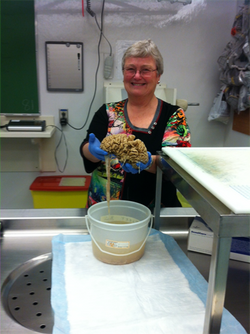

Prince George P.A.R.T.Y. Program
Prevent Alcohol and Risk-Related Trauma in Youth

HISTORY
Sunnybrook in Toronto
One day, friends of an emergency nurse's daughter asked if they could come to Sunnybrook Health Science Centre in Toronto to see where people were brought when they were injured. The nurse approached the hospital administration and they encouraged her to research and develop a pilot program for teens that included an educational approach to injury and trauma. As a result, the Prevent Alcohol and Risk Related Trauma in Youth (P.A.R.T.Y.) program was formed at Sunnybrook in Toronto.
Prince George
In the 1990's, physicians and nurses at the University Hospital of Northern BC were concerned about the increasing number of young people coming in with traumatic injuries. In response, the Prince George P.A.R.T.Y. Program began in 1997. In 2002, the Prince George Safe Attitudes & Actions Society was formed with a single mission: to promote injury prevention among youth through reality education which increases awareness of risks and their possible impacts and emphasizes personal responsibility in making safer choices.
ABOUT US
The P.A.R.T.Y. Program is held at University Hospital of Northern British Columbia. There is a program put on every Thursday throughout the year from 9:00am until 2:30pm. It can accommodate 40 grade 10 students from Prince George and surrounding areas. During the day there is a presentation from an RCMP member and an Emergency Room physician. There is tours of the ICU, Emergency room, the Chapel, and the morgue with presentations in each place. At lunch, there is a hands on experience where the students assigned pretend disabilities to deal with while eating. The students go through a simulations of the effects of impairment where students are given an opportunity to practice simple tasks while wearing "drunk" goggles. People come in to talk to the students who have suffered traumatic injuries, describing living with life-changing consequences. The program guides participants to reconsiders behaviours which are too risky to be safe such as using drugs, smoking, driving under the influence, speeding, using a cell phone while driving and not wearing a seat belt. The program also wants the participants to think carefully about the choices they make to ensure their own safety and the safety of others.
The P.A.R.T.Y. Program is funded by the Prince George Safe Attitudes & Actions Society.
Vision:
Youth will be able to recognize risks and make safer choices about their activities.
Mission:
To promote injury prevention through reality education.
Mandate:
To reduce the incidence of risk related trauma in youth and to increase awareness of youth regarding risk-related trauma.
Values:
Acceptance of each person, respect of confidentiality, support through education of individuals in making healthy choices.
 |  |  |  |
|---|---|---|---|
 |  |
Statistics and Information
“There was an increase (not analyzed for statistical significance) in reports that participants have an agreement with an adult for a safe ride home in any situation (75% vs. 86%).”
There was a statistically significant difference in the percentage of students who reported wearing a seatbelt before participating in the party program vs. after. (Approx 15% based on graphical data).
-from Timmins P.A.R.T.Y. program evaluation results
“Second, our study showed that a program designed to change attitudes to risk-taking behaviors (57% vs. 21%) can successfully empower young people, reducing their subsequent risk of committing violence- or traffic-related offences, injuries and death.”
-from Effect of an Injury Awareness Education Program on Risk- Taking Behaviors and Injuries in Juvenile Justice Offenders: A Retrospective Cohort Study
3 month and 6 month post-tests showed students were more aware of the importance of safety behaviors, however the 12 month post-test did not reflect the same result. Based on this, perhaps there should be a follow-up reinforcement of the message of the PARTY program to the participants at the 3-month period.
-from: Modified P.A.R.T.Y. Program Results: 12-Months Post-Program Analysis

SURVIVOR STORIES

Jamie Coope

Jesse Ryckman

David Belair


STUDENT RESPONSES
"For myself, the thing that stood out to me the most was how drastically someone’s life can change in a matter of seconds." -Morgan Endacott
"My experience was educational, and at times emotional, but none of my beliefs were changed (maybe because I went in being strongly against drinking and driving), and my behaviours and choices would’ve been the same regardless of my experience with the program." -Brianna Hanley
"She showed us a picture of herself before the accident and it did not resemble the girl who was standing in front of me at all. I could not believe how different she looked. She may not have been driving or caused the accident, but she was under the influence herself which impaired her judgment, leaving her with a deformed face and a decision that could never be taken back. ." -Amy Crossan
CONTACT US AND LINKS
University Hospital of Northern British Columbia
1475 Edmonton Street, Prince George,
British Columbia. V2M 1S2
Contacts
Email: lynn.primus@northernhealth.ca
Tel: 250 565 2869 (Please leave a voicemail)
Links
Prince George P.A.R.T.Y. Program on Facebook


